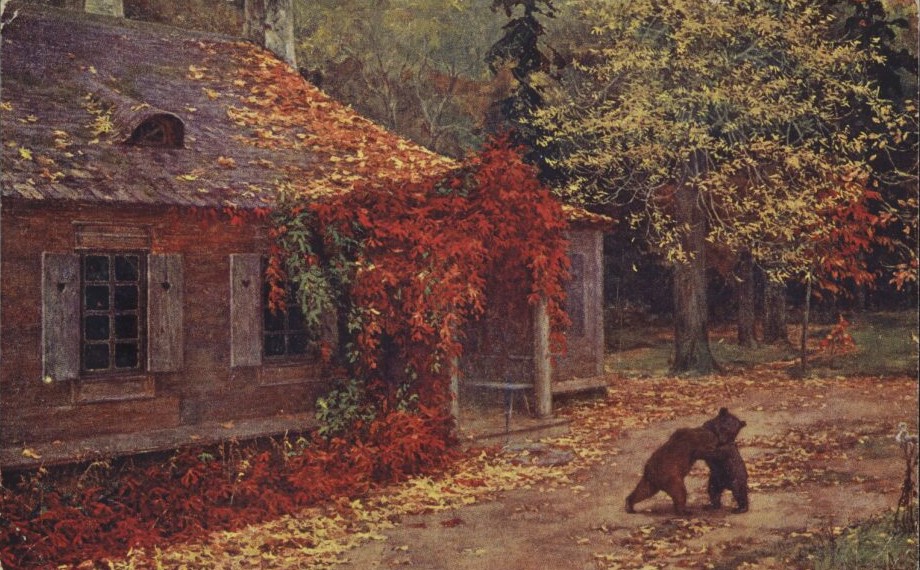Admittedly, it was not a time when - like we do today - one could hole up in their homes and spend time under a blanket. There was no shortage of autumn chores and work that had to be done - but this was sweetened by the incredible abundance of crops and nature, fun and the invaluable opportunity to be together.
Today, many people think of autumn as a gray season that should simply be waited out. Such thinking has always been alien to farmers in the traditional countryside. Their entire life was regulated by the cycles of nature. In the agricultural calendar, everything had its strict time according to the seasons and the weather. In nature, autumn is the end of plant vegetation and preparation for sleep and winter rest. It also marks the end of the liturgical year and, consequently, the ritual year. All this, however, did not mean that it was a time of rest and laziness for villagers.
The beginning of autumn was even a busy period. The fields and orchards were full of crops waiting to be harvested. It was therefore the ideal time to dig potatoes, carrots, cabbage and harvest apples, plums or pears. To make the larder richer, the gifts of the forest were also readily available. Regular trips were made to go mushroom picking. Mushrooms were not only a variety in the diet of villagers, but also provided an opportunity to earn money by selling the surplus. Forest fruits ripening in autumn were also harvested and, before the establishment of apiaries, honey was also selected from forest beehives.
The harvested crops had to be properly preserved so that they could serve people through the coming winter months without damage. What could be processed was processed so that it would survive until spring. This was a very responsible task, as the fate of the family depended on it in the run-up to the new harvest. At home, therefore, the collected mushrooms were dried, pickled and various other preserves were made for the table or for home first-aid kits.
In the mountains in autumn, shepherds would prepare for winter and drive their flocks of sheep from the pastures to the village. In the Kuyavia region, on the other hand, the end of September was a time for the farm servants to meet with the heir. They were thanked for their service, and over refreshments and vodka further working conditions were discussed. This was also when one could be dismissed and given permission to look for another job.
Today autumn is a time for many of us to slow down and spend it with a mug of warm drink at home, while in the old countryside it was a time for parties. It was this time of year and specifically September and October were the months when most weddings were held. This was due to the fact that the post-harvest larders were full, which gave hosts the opportunity to invite guests and share what they had harvested.
However, parties were not only weddings. As the days grew shorter and the weather often worsened, every moment was used to stay together. For example, potato digging united the community, as it involved not only the owner of the field in question, but also family and neighbors. All chores were accompanied by fun. Pickling cabbage, shredding it, trampling it and whisking it in barrels provided opportunities for socializing, jokes and laughter. At home, the increasingly long evenings were spent in wide circles. Women would prepare preserves together, and when everything was ready they would get down to, for example, plucking feathers and spinning thread. From the feathers they sewed pillows, quilts and burp cloths. Young girls, with the help of older cousins, prepared everything that would later constitute their dowry. Work was made more pleasant by singing together.
Gradually, as night began to top the day there was a mood of reverie. It was the perfect time to think about the future. In order to dispel a little of the gloom of the coming days, this time was used for divination, which was also often a pretext for meetings and good fun. For example, fortune telling was done on November 11 on St. Martin's Day and at the end of the month during St. Catherine's Day and St. Andrew's Day. These customs are still familiar to us today.
Autumn weather was also an indication of what kind of aura to expect in winter. Based on these observations, many proverbs were created, e.g.:
When autumn foggy, winter snowy.
When October with snow arrives, in the spring the snow in the fields lies long.
Rain in early November, frost in January predicts.
The end of autumn marks the beginning of Advent. According to old customs, no more work on the land was allowed during this period. The land was supposed to rest so that later it could produce crops anew. Houses were busy cleaning and preparing for the holidays. It was a time for threshing grain, whitewashing walls and making new clogs. Women sewed new shirts, and girls and children prepared Christmas decorations. The new liturgical year was beginning, and villagers were once again entering a cycle that would end with the next autumn.
Text: Magdalena Trzaska
Photo: public domain polona.pl

